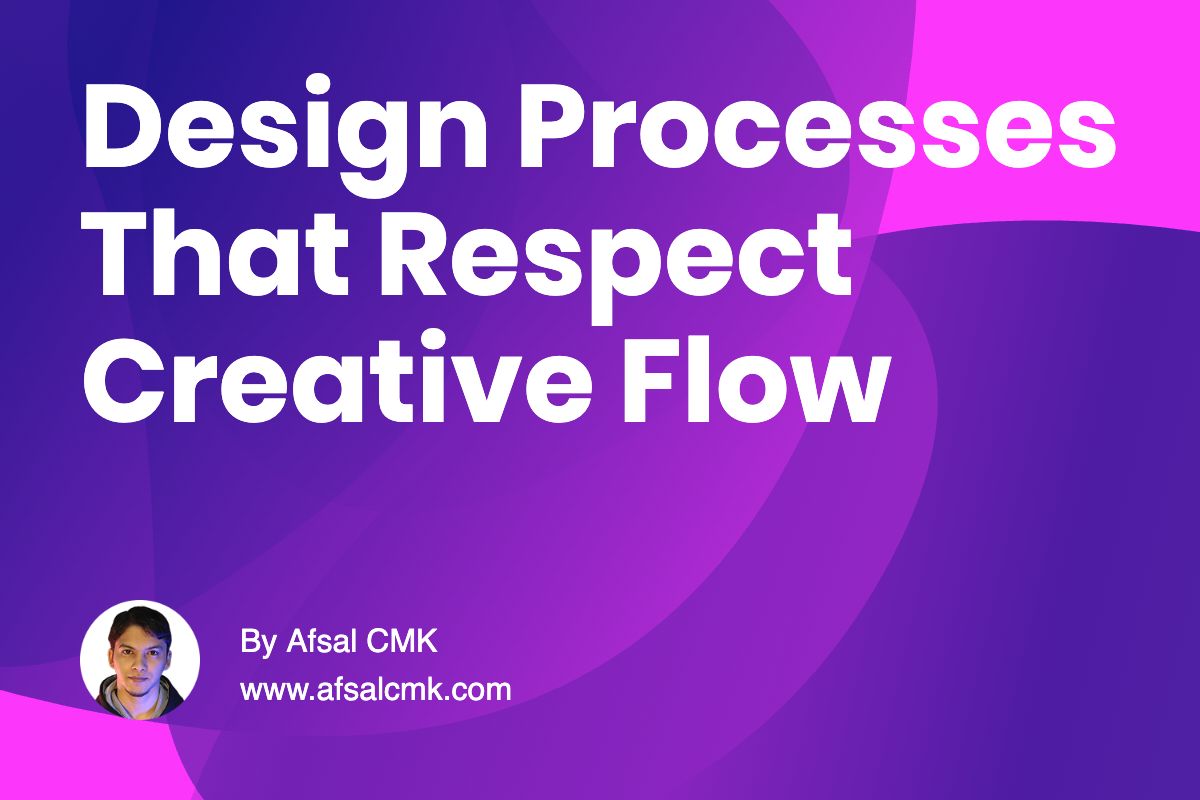
Design Processes That Respect Creative Flow
Creative flow isn’t something that can be forced. It’s a rhythm - a state where designers think, connect ideas, and bring clarity through exploration. Yet, most design processes today unintentionally disrupt that flow. Tight deadlines, fragmented feedback, and constant context switching pull designers out of the deep focus they need to create meaningful work.
When I think about the best projects I’ve been part of, there’s one common factor: the process supported creativity, not restricted it. The team knew the goals, the timelines were realistic, and there was room for iteration. That space to explore without immediate judgment made all the difference. It’s not that there were no constraints - there were plenty - but they were designed thoughtfully to channel focus rather than suffocate it.
Respecting creative flow starts with understanding how designers actually think and work. Design is not linear. Inspiration doesn’t arrive on schedule. The process should acknowledge this - giving time for immersion, sketching, rethinking, and refinement. A good design process builds in moments of reflection, not just production. It allows the mind to wander, connect dots, and return with sharper insights.
One of the easiest ways to break creative flow is through fragmented communication. Back-to-back review meetings or constant Slack pings create the illusion of progress while draining energy. The best leaders I’ve worked with knew when to step back. They created focus blocks, clear review checkpoints, and trusted designers in between. That trust gave room for creativity to flourish. It told the team, “Your time to think is valuable.”
Another part of respecting flow is designing feedback loops that build, not break. Too often, feedback comes scattered and late - after the designer has already invested hours polishing a direction. Instead, early check-ins, structured critiques, and clear problem framing help keep the creative energy alive. It turns the process into a collaboration rather than a correction.
Tools and rituals also shape creative flow. Figma, whiteboards, even sticky notes - they’re not just tools but extensions of how teams think together. Having flexible spaces for exploration and structured ones for refinement helps balance creativity with clarity. It’s the difference between chaos and momentum.
Timeboxing can help, too - not to limit creativity but to focus it. Setting small milestones, such as two hours for wireframes or a day for exploring visual directions, creates momentum while leaving space for iteration. It’s about creating a rhythm that encourages consistency without rushing imagination.
Designers thrive when they feel both trusted and guided. That balance is what makes a process work. When the process is too rigid, it kills energy; when too loose, it leads to drift. The sweet spot lies in clarity of purpose and freedom in method - knowing the ‘why’ deeply but letting the ‘how’ evolve naturally.
In the end, designing processes that respect creative flow is an act of empathy - for the designer, for the craft, and for the outcome. It’s about building an environment where thinking time is as valued as output, and where creativity isn’t squeezed to fit a template but nurtured to reach its full potential. Because when designers flow, everything flows - quality, collaboration, and ultimately, the product itself.